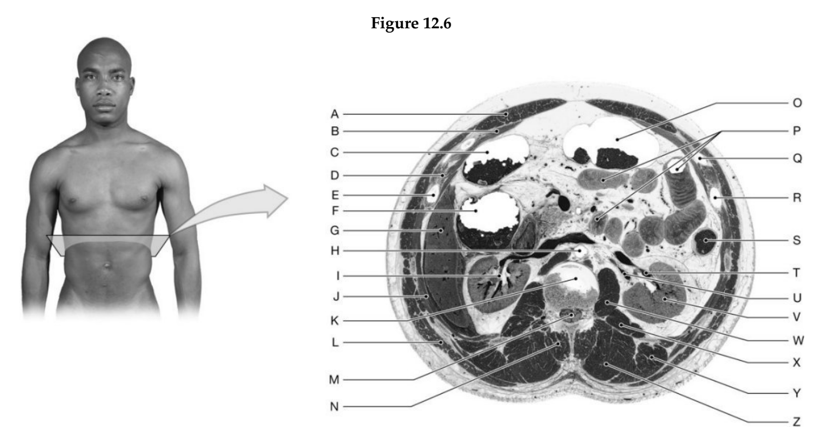Answer the following questions true (T) or false (F)
1. There are two phases of the cardiac cycle in which all four heart valves are open: the isovolumetric contraction phase and the isovolumetric relaxation phase.
2. Pressure in the aorta is greater than pressure in the pulmonary trunk; therefore, the left ventricle has to generate a greater pressure than the right ventricle in order to eject blood from the heart.
3. Stroke volume (SV) can be calculated by subtracting the end-diastolic volume (EDV) from the end-systolic volume (ESV).
1. FALSE
2. TRUE
3. FALSE
You might also like to view...
What activity during oocyte activation prevents penetration by additional sperm?
Using the figure below, identify the labeled part.

1. Label A: ______________________________
2. Label B: ______________________________
3. Label C: ______________________________
4. Label D: ______________________________
5. Label E: ______________________________
6. Label F: ______________________________
7. Label G: ______________________________
8. Label H: ______________________________
9. Label I: ______________________________
10. Label J: ______________________________
11. Label K: ______________________________
12. Label L: ______________________________
13. Label M: ______________________________
14. Label N: ______________________________
15. Label O: ______________________________
16. Label P: ______________________________
17. Label Q: ______________________________
18. Label R: ______________________________
19. Label S: ______________________________
20. Label T: ______________________________
21. Label U: ______________________________
22. Label V: ______________________________
23. Label W: ______________________________
24. Label X: ______________________________
25. Label Y: ______________________________
26. Label Z: ______________________________
Epithelial cells are continually being shed from the villi because
a. the intracellular enzymes digest important cellular constituents, causing the cells to disintegrate and slough. b. the body needs a continual supply of protein derived from the digestion of these cells. c. new cells are continually being produced in the crypts at the base of the villi and migrate upward. d. acid entering the small intestine from the stomach constantly destroys the small intestinal lining, causing the cells to slough. e. none of these answers.
The glycocalyx serves all of the following functions except:
A. determining blood transfusion compatibility. B. protecting the membrane from physical and chemical injury. C. helping to bind a sperm to an egg. D. absorbing energy into the cell. E. distinguishing the body's own cells from foreign cells.